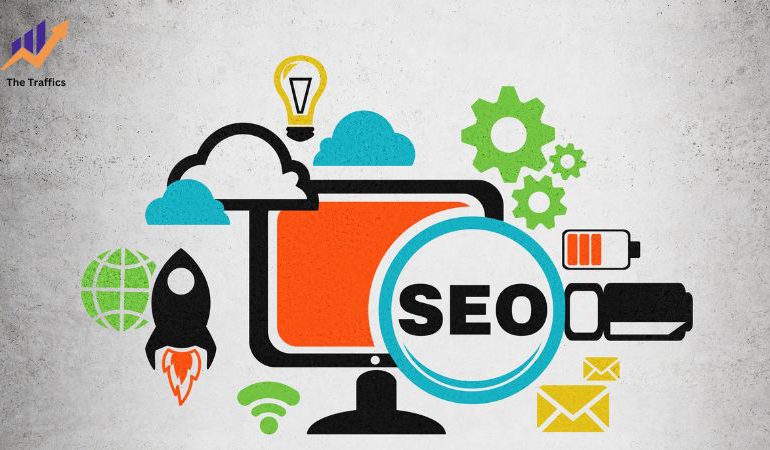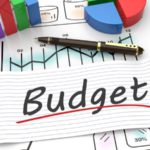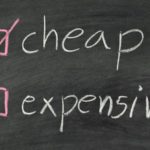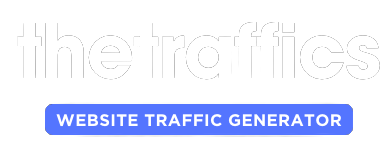15+ On-Page SEO Checklist in 2024 (With Strategy)

In today’s digital landscape, having a strong online presence is crucial for the success of any business. One of the key elements that can significantly impact your website’s visibility and performance in search engine rankings is on-page SEO. In this comprehensive guide, I will walk you through the ultimate on-page SEO checklist for 2024, providing you with a step-by-step strategy to optimize your website and boost its performance.
Why On-Page SEO is Important for Website Performance
Before we dive into our on-page SEO checklist, let’s understand why on-page SEO is so important for your website’s performance. On-page SEO refers to the optimization techniques applied directly on your web pages to improve their visibility in search engine results. By implementing on-page SEO strategies, you can ensure that search engines understand the relevance and value of your content, which ultimately leads to higher rankings and more organic traffic.
Moreover, on-page SEO practices improve the user experience, making it easier for visitors to navigate your website and find the information they need. This increased satisfaction can lead to higher engagement rates, lower bounce rates, and more repeat visitors. Additionally, as search engines continue to refine their algorithms, they place greater emphasis on user experience metrics, further underscoring the importance of on-page optimization.
Keyword research and optimization
Keyword research is a very important factor in any on-page SEO checklist. They help search engines understand the context and relevance of your content to specific search queries. By strategically incorporating relevant keywords in your content, you can improve your website’s visibility and attract more targeted traffic.
Start by conducting keyword research to identify the most relevant and high-volume keywords in your niche. Consider the search intent behind each keyword and select those that align with the purpose of your content. Once you have a list of keywords, strategically place them in the following elements of your content:
Keyword placement
- Title: Include your primary keyword in the title of your page or blog post. This helps search engines know what your content is mainly about.
- Heading Tags: Use heading tags (H1, H2, H3, etc.) to structure your content and include relevant keywords in the headings. This improves the readability and SEO of your content.
- Body Text: Sprinkle your keywords naturally throughout the body text of your content. Aim for a keyword density of around 1-2% to avoid keyword stuffing.
- Meta Description: Craft a compelling meta description that includes your primary keyword. This is the snippet that appears in search engine results and influences click-through rates.
Remember, while it’s important to include keywords in your content, do it in a way that feels natural and doesn’t compromise the quality or readability of your content.
Content with Images, Videos, and other Visual Elements
In today’s digital landscape, visual content plays a crucial role in capturing and retaining the attention of your audience. By incorporating images, videos, infographics, and other visual elements into your content, you can enhance the user experience and increase the time spent on your website.
When adding images to your content, make sure they are relevant to the topic and provide additional value. Optimize the file size of your images to improve page load time, as slow-loading images can negatively impact user experience and SEO.
If you’re embedding videos in your content, consider hosting them on platforms like YouTube or Vimeo and embedding them on your website. This not only improves the loading speed of your pages but also increases the chances of your videos being discovered through search engine results.
Additionally, consider using other visual elements like charts, graphs, and infographics to present complex data or statistics in a more digestible format. Visual content not only adds variety to your page but also increases the likelihood of your content being shared on social media platforms, driving more traffic to your website.
Write a Compelling Page Title
The page title, also known as the title tag, is one of the most important on-page SEO elements. It not only appears as the clickable headline in search engine results but also influences the relevancy and click-through rate of your content.
When writing a compelling page title, keep the following best practices in mind:
- Include your primary keyword: Incorporate your primary keyword in the page title to signal to search engines the main topic of your content.
- Keep it short: Keep the page title length to around 50-60 characters to ensure it doesn’t get cut off in search engine results.
- Make it catchy: Create a headline that forces users to click on your content. Use action words, numbers, and emotional triggers to grab their attention.
Heading tags optimization
Heading tags, from H1 to H6, play a critical role in organizing content on your web pages. They help break down content into digestible sections, making it easier for users to read and for search engines to understand the structure of your pages.
The H1 tag, which typically includes the title of your page, is particularly important for SEO. It should contain your primary keyword and give users a clear indication of what the page is about.
Use H2 and H3 tags to structure your content into subheadings and further optimize them with relevant keywords. This not only helps search engines understand the hierarchy and context of your content but also improves the readability and user experience of your website.
Meta tags optimization
Meta tags play a crucial role in on-page SEO, while meta tags don’t directly impact rankings like other factors, they do play a key role in click-through rates (CTR), making them an essential part of any on-page SEO checklist.
The two most important meta tags are the meta title and meta description. The meta title is the clickable headline you see in search results, and the meta description gives a short summary of what the page is about.
When optimizing your meta tags, make sure to include your target keyword in the meta title and meta description. Keep the meta title under 60 characters and the meta description under 160 characters to ensure they display properly in search engine results.
Page URL structure and optimization
The structure and optimization of your website’s URLs can impact its search engine visibility and user experience. When creating URLs, make them short and descriptive, and add target keywords to the URL. Avoid using numbers or irrelevant characters in your URLs, as they can make it harder for both search engines and users to understand the content of your pages.
Additionally, make use of hyphens (-) to separate words in your URLs. This improves readability and ensures that search engines can easily interpret the meaning of each word. For example, instead of having a URL like “www.example.com/page1.html,” opt for a more descriptive URL like “www.example.com/keyword-rich-page.html.”
Image optimization and alt tags
Image optimization is another useful factor in any on-page SEO checklist. Images play a vital role in enhancing the visual appeal of your website and improving user engagement. However, they can also slow down your website if not optimized properly. When using images on your web pages, make sure to compress them to reduce their file size without compromising the quality.
Additionally, optimize your image alt tags by providing descriptive and keyword-rich text. Alt tags not only improve accessibility for visually impaired users but also provide search engines with valuable information about the content of your images. Use relevant keywords in your alt tags to further enhance your on-page SEO.
Internal linking and anchor text optimization
Internal linking means placing links on your website that lead to other pages on the same site. It not only helps users navigate your website but also distributes link equity and improves the crawling and indexing of your web pages by search engines. When you’re doing internal linking, be sure to use clear words in the links that describe what the linked page is about, and include important keywords related to the content.
Strategically link to related articles or pages within your website to provide additional value to your readers and encourage them to explore further. However, avoid over-optimization and excessive linking, as it can appear spammy and negatively impact your website’s rankings.
Add External Links
Linking to external websites is an important aspect of any on-page SEO checklist. By including relevant and authoritative external links in your content, you not only provide additional value to your readers but also signal to search engines that your content is well-researched and connected to the broader online ecosystem.
When adding external links, keep the following tips in mind:
- Choose authoritative sources: Link to reputable websites and sources that provide valuable information related to your content. This helps build trust with your audience and search engines.
- Use descriptive anchor text: Instead of using generic anchor text like “click here” or “learn more,” use descriptive anchor text that accurately represents the content of the external link.
- Open links in a new tab: To prevent users from navigating away from your website, set external links to open in a new tab.
Schema Markup Implementation
Schema markup, also known as structured data, is a code that you can add to your website to help search engines understand the context and meaning of your content. By implementing schema markup, you can enhance your website’s visibility in search engine results and drive more targeted traffic.
Some commonly used schema markup types include:
- Article: Use the article schema markup to mark up your blog posts, news articles, or other written content.
- Product: If you sell products on your website, use the product schema markup to provide detailed information about your products, such as price, availability, and reviews.
- Local Business: If you have a physical location, use the local business schema markup to provide information like address, phone number, and opening hours.
By implementing schema markup, you can make your content more visible and appealing to both search engines and users, ultimately improving your website’s performance.
Content Freshness
Search engines prioritize fresh and up-to-date content in their rankings. Regularly updating and refreshing your content not only signals to search engines that your website is active and relevant but also provides value to your audience.
To ensure your content remains fresh, consider the following strategies:
- Regularly update your existing content: Review your existing content to identify outdated information or statistics. Update them with the latest data and insights to keep your content relevant.
- Publish new content regularly: Aim to publish new content on a consistent basis. This not only attracts new visitors but also encourages search engines to crawl your website more frequently.
- Repurpose your content: Repurpose your existing content into different formats like videos, infographics, or podcasts. This allows you to reach a wider audience and breathe new life into your content.
Mobile optimization and responsive design
As more and more people use mobile devices, it’s important to ensure that your website works well for them. Mobile optimization involves ensuring that your website is responsive and provides a seamless user experience across different devices and screen sizes.
Implement responsive design principles to automatically adjust the layout and content of your website based on the user’s device. Optimize your website’s loading speed, readability, and navigation for mobile users to enhance their experience and improve your on-page SEO.
Page speed optimization
Page speed is a critical factor that affects both user experience and search engine rankings, which is why it’s an essential component of any on-page SEO checklist. Slow-loading web pages can lead to higher bounce rates and decreased user satisfaction. To optimize your website’s page speed, minimize HTTP requests, optimize your images, enable browser caching, and use a content delivery network (CDN).
Regularly monitor and analyze your website’s page speed using tools like Google PageSpeed Insights or GTmetrix. Identify and fix any issues that may be slowing down your website, such as excessive plugins, unoptimized scripts, or large file sizes. A fast-loading website not only improves user experience but also enhances your on-page SEO
On-Page SEO Tools and Resources
Making an effective on-page SEO checklist can be made easier with the help of various tools and resources available online. These tools can help you with keyword research, content optimization, technical analysis, and performance tracking.
Consider the following on-page SEO tools and resources:
- Keyword research tools: Use tools like SEMrush, Ahrefs, or Google Keyword Planner to identify relevant keywords, analyze search volumes, and explore new keyword opportunities.
- Content optimization tools: Tools like Yoast SEO or Surfer SEO provide recommendations for optimizing your content, including keyword placement, readability, and meta tags.
- Website auditing tools: Conduct regular website audits using tools like Screaming Frog or Moz Pro to identify technical SEO issues, broken links, or duplicate content.
- Rank tracking tools: Track your keyword rankings and monitor your website’s performance using tools like AccuRanker, Serpstat, or SEMrush.
- Analytics tools: Utilize platforms like Google Analytics or Matomo to analyze website traffic, user behaviour, and engagement metrics.
- Schema markup generators: Use tools like Schema.org or Google’s Structured Data Markup Helper to generate schema markup code for your website.
Conclusion:
In conclusion, implementing a comprehensive on-page SEO strategy is crucial for boosting your website’s performance and attracting more organic traffic. By focusing on content quality, keyword optimization, visual elements, user experience, and technical SEO elements, you can improve your search engine rankings and provide a better experience for your visitors.
Regular monitoring, maintenance, and the use of on-page SEO tools and resources will ensure your strategy remains effective and up-to-date in the ever-evolving world of SEO.






